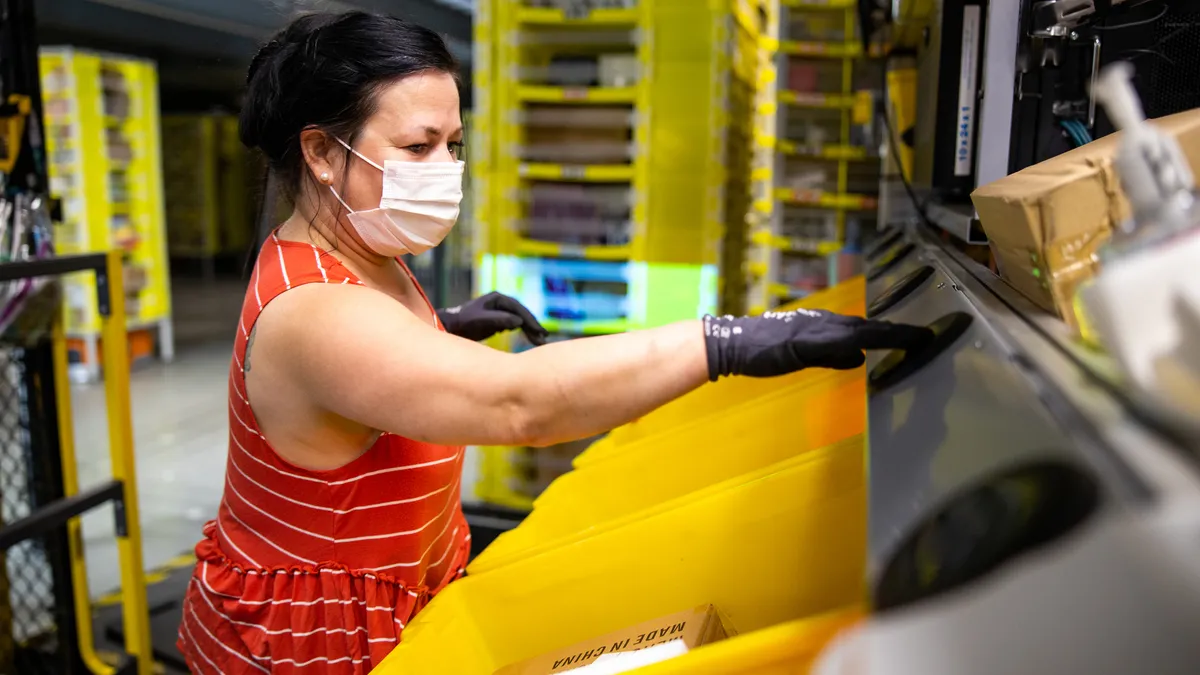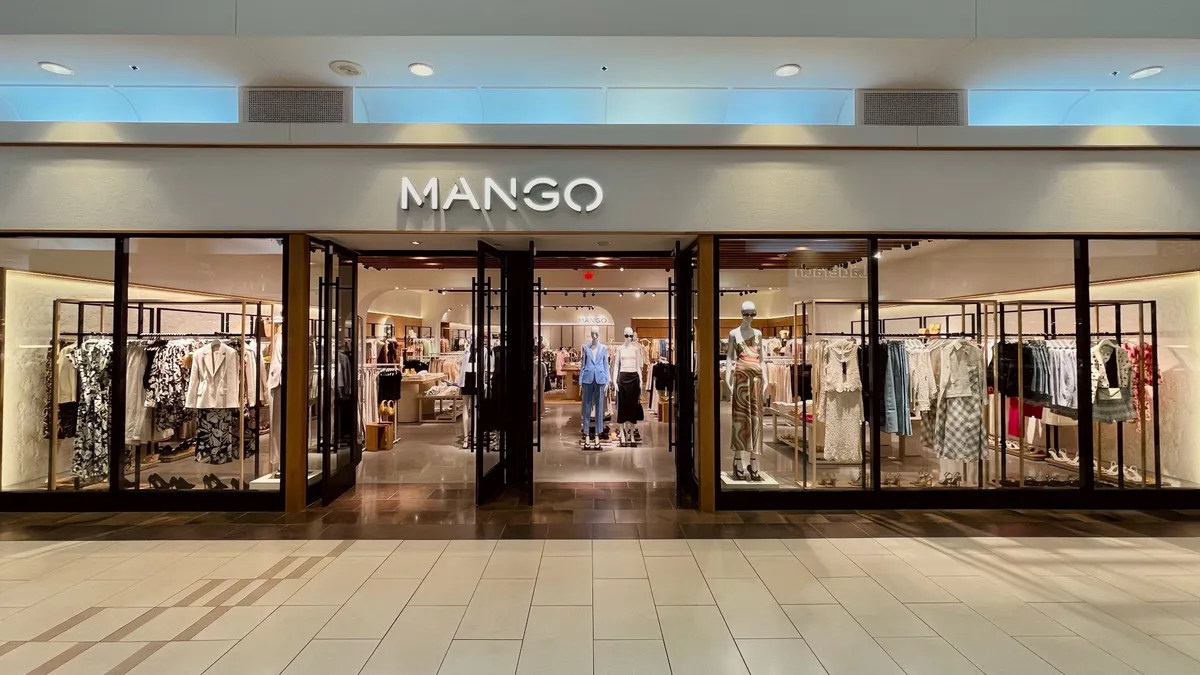A warehouse worker plucks an item from a shelf and drops it into a bin, and with each action earns digital currency that can be redeemed for prizes. While the worker earns rewards, managers monitor worker speed and accuracy.
That's the process at warehouses where Amazon has rolled out FC Games, a suite of digital games in which workers can voluntarily participate.
Like many other things, Amazon leads the supply chain industry in gamification — adding a game or competitive component to daily tasks like picking and packing to engage and reward workers.
Some employees reportedly enjoy the distractions provided by playing games during a day of repetitive tasks. But employee advocates fear the big-brother-is-watching aspect, turning humans into automatons driven by rewards and penalties that could lead to injuries and burnout.
So far, Amazon hasn't made public its performance gains from the gamification approach. But other supply chain operators using gamification have started to see and publicize the benefits.
Chattanooga, Tennessee-based 3PL Kenco Logistics uses elements of gamification in its warehouses and its brokerage business. On the warehouse side, the company has seen productivity improvements in the 3% to 5% range in locations that didn't have real-time visibility into performance measurements. In its brokerage group, productivity improved 10% to 15%, according to Kristi Montgomery, vice president of innovation for Kenco.
The brokerage operation uses a system call Ambition that tracks call volumes and deals in a fantasy-football-like system. It's designed to drive team-based competition, so the winning team might be rewarded with a pizza party.
"There's a leaderboard, and you can see who's on top, but it's not at the virtual worlds level," Montgomery said.
"We have to figure out how to normalize the data among the workforce."

Kristi Montgomery
Vice president of innovation for Kenco Logistics
Kenco's labor management system provides real-time visibility into an individual's performance and allows managers to compare employees in its warehouses. Standards are developed for each warehouse based on the customer, the product mix and workforce.
"Someone who picks refrigerators all day won't move the same numbers as someone picking microwaves, so we have to figure out how to normalize the data among the workforce," Montgomery said.
In some warehouses, the company has started sharing individual performance data in real time on handheld devices. Or the data may be shared on displays in breakrooms or posted on bulletin boards. If the employee uses a digital device like an RF Gun, it will show if they're behind or ahead of the standard.
"With the standards, you have a foundational basis for being able to reward the employees that should be rewarded and coach the ones who need some help," Montgomery said.
It's not just about speed. Kenco's system uses an algorithm that looks at pick accuracy, product damage, near misses with a lift truck and other safety aspects to display a performance metric.
"They get direct feedback at the moment about their performance and how they're doing against the standard," Montgomery said.
Montgomery said some warehouses use an incentive-based pay system, and employees are quick to let managers know if the information is out of date.
Incentivizing workers in a tight labor market
Even before the pandemic, logistics companies struggled with hiring and retaining enough staff to keep up with the work. Gamification is seen as a new way to engage employees faced with a shift of repetitive tasks.
Companies have measured productivity in the past, but it was used as more of a stick than a carrot, said Peter Schnorbach, senior director of product management at Atlanta-based Manhattan Associates.
"They tended to focus on the negatives of people who weren't performing well, rather than those that were performing the way they should," he said.
Coming out of the pandemic lockdowns, labor shortage problems of recruiting, retention and turnover loom larger than ever.
"We need to figure out how we incentivize people, keep them engaged in what they're doing and keep them happy," Schnorbach said.
Warehouse employment plateaus after November 2020 peak
Rather than responding to blinking lights like rats in a maze, humans are driven by the self-determination theory. Schnorbach noted people want to know what's expected of them, they are good at what they do and they have autonomy over what they do.
"Gamification reinforces those kinds of behaviors," Schnorbach said.
The most effective warehouse games are those where employees compete against a standard. That could be the number of items picked or boxes packed per hour. Schnorbach emphasized it's not just about speed but also working safely and accurately.
While adding a game element is relatively new, Manhattan Associates has worked with customers on employee performance monitoring as a part of its labor management system. With the game element added, workers receive hourly performance updates on handheld devices.
The system is built on the concept of challenges: 100% productivity, 100% pick accuracy and no accidents. Every time an employee meets the challenge, they earn points that can be redeemed for a reward like a gift card or put in a drawing for a flat-screen TV.
Montgomery and Schnorbach were quick to point out the difference between the video-game-like concepts Amazon uses and their approach to gamification.
"It's not necessarily about making work fun; it's about driving performance and making people feel valued for doing a good job," Schnorbach said.
So far, one customer has used the system in a pilot program, and others are considering it.
Roadmap to gamification
To be successful, gamification must be built on a solid foundation of standard operating procedures and a labor-management system that measures performance compared to the established standards.
Supply chain managers must consider the pros and cons of gamification, and weigh the benefits on incentives and productivity versus the stress a game could place on workers.
"If a process can't work manually with your staff as they exist in their processes as they exist, it's not going to work if you throw in an electronic system," Montgomery said. "You have to have an idea of what you're trying to gamify before you put a system behind it."
Once decisions and tech systems are in place, then employee feedback can be added to the mix. Performance information can be available on bulletin boards, kiosks or mobile devices.
"You don't have to wait to talk to your supervisor to find out how you're doing," Schnorbach said. "You're getting systematic feedback all the time."
"We need to figure out how we incentivize people, keep them engaged in what they're doing and keep them happy."

Peter Schnorbach
Senior director of product management at Manhattan Associates
One fear was that employees would slow down their performance if they worked ahead of the standard, but so far, that hasn't happened. It appears the incentive for points is helping to motivate workers.
Based on the pilot program, Manhattan Associates has limited updates to hourly, so employees don't check the dashboard too often. Access can be restricted to break times also.
Kenco sees gamification as a tool to attract and retain newer workers but is also sensitive to veteran workers.
"We have a really long-tenured workforce, and they do a phenomenal job every day, and we don't need to put digital avatars out there to make them better," Montgomery said. "We are careful about where we introduce some of these things because it can have a negative impact as well."
This story was first published in our weekly newsletter, Supply Chain Dive: Operations. Sign up here.






















